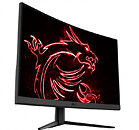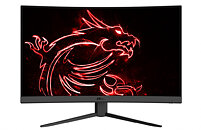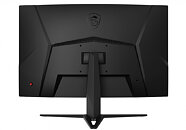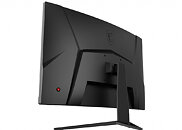- Joined
- Oct 9, 2007
- Messages
- 47,912 (7.37/day)
- Location
- Dublin, Ireland
| System Name | RBMK-1000 |
|---|---|
| Processor | AMD Ryzen 7 5700G |
| Motherboard | Gigabyte B550 AORUS Elite V2 |
| Cooling | DeepCool Gammax L240 V2 |
| Memory | 2x 16GB DDR4-3200 |
| Video Card(s) | Galax RTX 4070 Ti EX |
| Storage | Samsung 990 1TB |
| Display(s) | BenQ 1440p 60 Hz 27-inch |
| Case | Corsair Carbide 100R |
| Audio Device(s) | ASUS SupremeFX S1220A |
| Power Supply | Cooler Master MWE Gold 650W |
| Mouse | ASUS ROG Strix Impact |
| Keyboard | Gamdias Hermes E2 |
| Software | Windows 11 Pro |
MSI today rolled out the Optix G32CQ4, a 31.5-inch, 16:9 curved gaming monitor. Featuring a 1500R curvature, this monitor uses a VA panel with WQHD (2560 x 1440 pixels) native resolution, 1 ms (MPRT) response time, 165 Hz refresh rate, 178°/178° viewing angles, and support for AMD FreeSync Premium technology. Other vital panel specs include 3000:1 static contrast ratio with dynamic mega-contrast, 250 cd/m² maximum brightness, and 91.43% coverage of DCI-P3. The panel features a matte finish and anti-glare treatment. Inputs include one DisplayPort 1.2a (needed for FreeSync), and two HDMI 2.0 ports. The company didn't reveal pricing.




View at TechPowerUp Main Site




View at TechPowerUp Main Site



